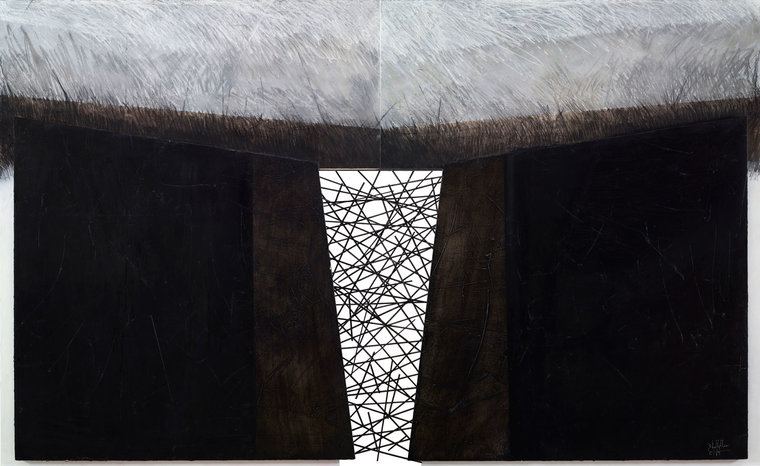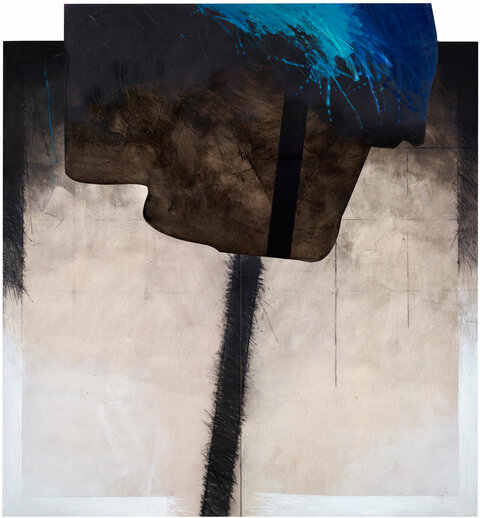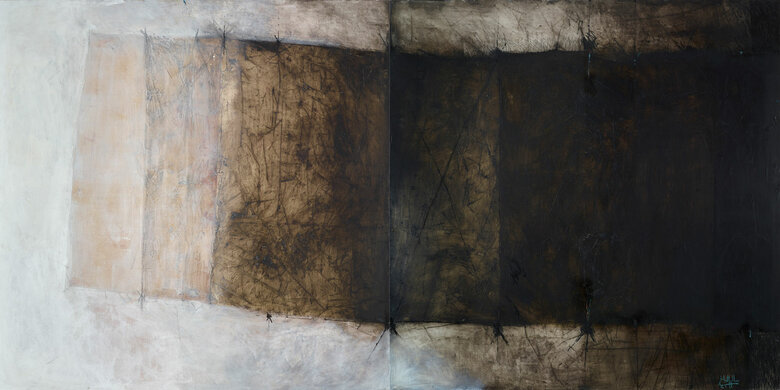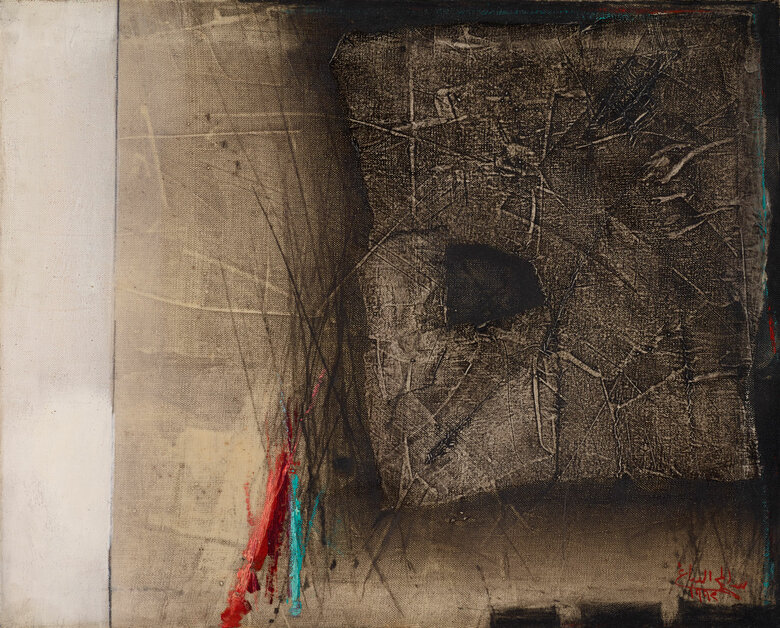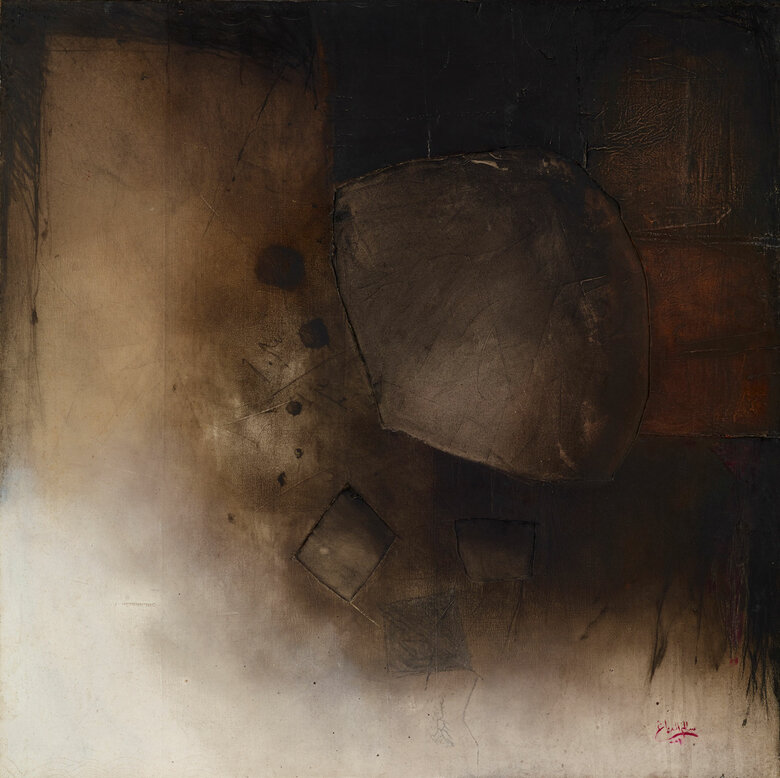Untitled (2012) is a large-scale, three-dimensional abstract painting made up of two identical wooden boards of irregular geometric shapes that connect at the top. Atop the boards, two protuberant wooden platforms of mirroring shapes are fixed at nearly one-third of each board's height; they connect the two right and left boards together.
The remaining hollow part creates a trapezoidal void. The artist has chosen to fill this void with thin, fragile black rods that interlace one another, roughly weaving the two sides of the board together. The overall picture is a large horizontal rectangular shape painted in gradients of black, brown, and white.
The protuberant wooden plates possess a particularly coarse surface, or more accurately, a textured one. This is generated by the unassumingly very thin hair-like overlapping brushstrokes applied on the wooden surfaces. Beneath the wooden panels and on the right and left extremities of the artwork, the edges are painted in white. This highlighting technique provides depth as it projects the wooden platforms further from the composition.
Above the trapezoidal hollow section, which is at the focal point of the horizontal canvas, the artwork’s skyline is amassed with interrupted vertical hair-like brushstrokes applied with shades of white and gray acrylic paint, muddled with black and brown to the bottom. Though there is a gradient transition, the stark contrast of the coal-black smooth paint application at the lower register of the artwork to the luminous grayish-titanium white paint at its upper register demonstrates the artist’s skill and creativity. Al-Dabbagh's brushstrokes are reminiscent of animal hair. And the straight, recurrent, hatch-like strokes are akin to grass leaves. The patterned gestural application of brushstrokes – mostly tilted to the left- creates a dynamic feel that contrasts with the lower, still, and intense bottom.
Salim Al-Dabbagh’s style can be characterized as dark, abstract and mysterious. Having been influenced by his Iraqi heritage, particularly Bedouin traditions, as well as his love for graphic design, his artworks portray essence and form. Al-Dabbagh draws inspiration from the women of Iraqi Bedouin traditions, whowould make traditional black tent membranes by hand weaving black goat hair and brown camel wool on ground looms.
Monochromatic palettes are a meaningful motif for Al-Dabbagh, as he explains black and white reflect his unconscious, rooted in emptiness. Untitled(2012) exemplifies his use of the color black and the intervention of negative space to represent loss and lacking. The hollow yet interwoven center, which might be the result of the collision of the two mirroring wooden panels, fragments the enigmatic and misty atmosphere of the work. Moreover, the intertwined lines in the gap resemble the coarse stitches sewn in creating a Bedouin tent. The hairy brushstrokes and dark paneling accentuate the imagery, emulating local heritage.
Al-Dabbagh’s artwork echoes his Iraqi culture and personal interests in graphic and textural design. The abundance of neutral colors and textured mixed media allows Untitled(2012) to mirror the feelings of the artist's experiences. His exploration of emptiness is present in how he manipulates space. The fragmentation of the canvas, through a series of tonalities, embodies a sense of depth and space that both translates a feeling of emptiness and allows for contemplative introspection.
signed and dated 2016 in Arabic lower left

